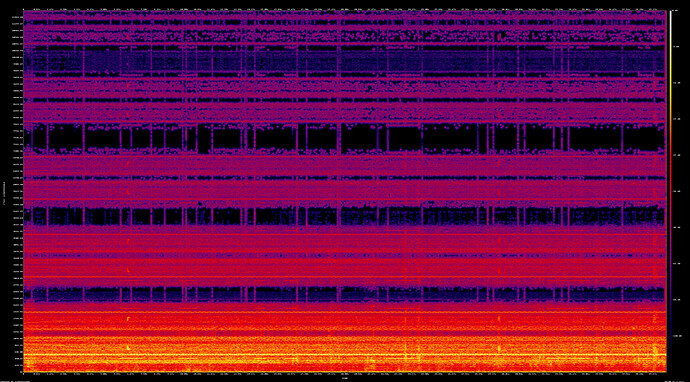I was curious to see the spectrum of the sound produced from such collected data:
For monitoring purpose, and grid’s assle, my 1D is atm located near of 3phase cables, a wall distant from it’s anchor.
The sound it produce is very agressive: https://youtu.be/B3sRKNWZEhs
Here is the linear spectrum of that sound produced. Before watching it, I expected some rough frequency multiplier on the original captured datas, and now I’m wondering how do you manage to produce that.
and well… Doh!.. I ended questioning and remember I do Fine Tuning, which the webapp is not doing. Here is a less tuned display of the introduction screen.
That script is really cool and I would like to produce sounds from my own computer, without hammering your infra.
Could it be possible to see sharing of its code ?
Regards.
1 Like
Hello muedbundy,
what an interesting thread starter, thank you!
Regarding your request, except for our RSUDP software, we do not release or share our under-the-hood code to the outside.
As an alternative, if you have access to a MATLAB installation, there is a package made by IRIS that could suit your purpose: IRIS - SeisSound, the Audio/Video Seismic Waveform Visualization
1 Like
From time to time, last night especially, I’m finding matching activities between audio microphone, the Raspishake, and the Raspiboom, on a dreadful vibro-acoustic situation. So my 3 sensors are set up in different rooms and they phase in.
Thanks to the tip of Mister David Alan, CA, I ordered an Earthworks Audio M23R. It’s a mic having an excellent frequency response and sensitivity. Also a fairly expensive mic (still affordable compared to B&K), but it was worth the money. I have improved a lot in terms of precision with it compared to some “low budget” measuring mics.
This precision is still improvable, I’m ATM trying to set up a Sound Devices MixPre3 II under Linux, but Pulseaudio seems to block any possibility above 44,1kHz 24bits, when that card is able of 192kHz 32bits float . It seems I have to setup some Hackintosh to raise the quality, or a Windows  a pity…
a pity…
Here is a picture of those phasing graphics.
Being able to switch octaves and give a colorful noise to those lines will be important. I will check the Mathlab algorithms and portability possibilities. Thank you for that tip.
1 Like
This sounds like a very exciting and interesting project to undertake. I think I remember reading about another user who was testing a microphone in similar conditions, but I cannot remember who this person was.
No problem at all! If you want to keep the community updated on your progress, feel free!



